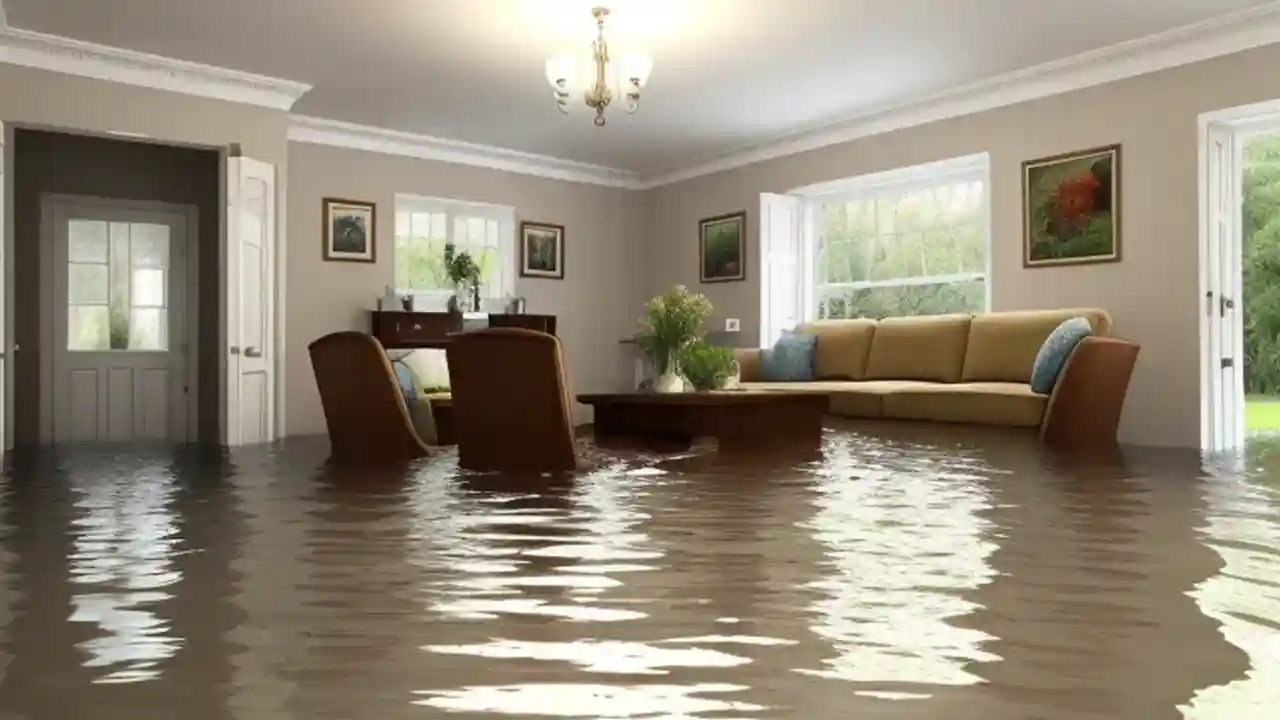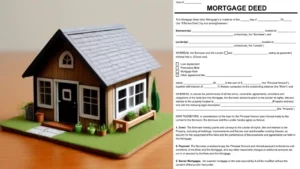Mortgagerateslocal.com – Floods are one of the most common and costly natural disasters in the world. They can cause extensive damage to homes, businesses, and infrastructure, as well as pose serious risks to human health and safety. How much does flood insurance costs?
If you live in an area that is prone to flooding, you may wonder how much flood insurance costs and whether you need it. Flood insurance is a type of coverage that protects your property from losses caused by water damage due to flooding.
It is not included in most standard homeowners or renters insurance policies, so you need to purchase it separately from a private insurer or through the National Flood Insurance Program (NFIP). The cost of flood insurance depends on several factors, such as the location, size, and value of your property, the flood zone you are in, the type and amount of coverage you choose, and the deductible you select.
Flood insurance can be a worthwhile investment for anyone who wants to protect their property and financial security from the devastating effects of flooding. By purchasing flood insurance, you can avoid paying out of pocket for repairs or replacements, as well as reduce the stress and hassle of dealing with flood damage.
How Flood Insurance Works and What It Covers
Flood insurance is a special type of insurance that protects your property and belongings from flood damage. It is not included in your standard homeowners or renters insurance policy, so you need to purchase it separately if you want to be covered.
There are two main sources of flood insurance in the United States: the National Flood Insurance Program (NFIP) and private flood insurance companies. The NFIP is a federal program that was created in 1968 to provide affordable flood insurance to homeowners, renters, and business owners in participating communities.
The NFIP is administered by the Federal Emergency Management Agency (FEMA) and works with more than 50 private insurance companies to sell and service flood insurance policies. Private flood insurance companies are independent entities that offer flood insurance policies that are not backed by the federal government.
Private flood insurance may offer more coverage options, lower premiums, or faster claims processing than the NFIP, depending on the provider and the policy. However, private flood insurance may not be available in all areas or for all types of properties.
Flood insurance policies typically cover two types of losses: building property and personal property. Building property refers to the physical structure of your home or business, such as the walls, floors, ceilings, foundation, electrical and plumbing systems, heating and cooling systems, and built-in appliances.
Personal property refers to the contents of your home or business, such as furniture, clothing, electronics, jewelry, artwork, and other valuables. The amount of coverage you can get for your building property and personal property depends on the type of policy you choose and the limits you select.
The NFIP offers two types of policies: standard flood insurance policies (SFIPs) and preferred risk policies (PRPs). SFIPs are designed for properties in high-risk flood zones, while PRPs are designed for properties in low-to-moderate risk flood zones. The table below shows the maximum coverage limits and deductibles for each type of policy:
| Policy Type | Building Property Coverage Limit | Personal Property Coverage Limit | Deductible Range |
|---|---|---|---|
| SFIP | $250,000 for residential | $100,000 for residential | $1,000 to $10,000 |
| $500,000 for non-residential | $500,000 for non-residential | ||
| PRP | $250,000 for residential | $100,000 for residential | $1,000 to $5,000 |
| $500,000 for non-residential | $500,000 for non-residential |
Private flood insurance companies may offer higher or lower coverage limits and deductibles than the NFIP, depending on the provider and the policy. You should always read the policy documents carefully and understand what is covered and what is not covered before buying flood insurance.
How Flood Zones Are Determined and How They Affect Your Flood Insurance Rates
Flood zones are geographic areas that indicate the level of flood risk for a given location. FEMA uses flood maps, also known as Flood Insurance Rate Maps (FIRMs), to identify and classify flood zones based on historical data, hydrological analysis, and engineering studies. Flood zones are assigned a letter or a combination of letters and numbers, such as A, AE, X, or V.
The flood zone designation of your property affects your flood insurance rates, as well as your eligibility and requirements for flood insurance. Generally, the higher the flood risk, the higher the flood insurance rates. The table below shows the main types of flood zones and their characteristics:
| Flood Zone | Description | Flood Insurance Requirement | Flood Insurance Rate |
|---|---|---|---|
| A | Areas with a 1% annual chance of flooding (also known as the 100-year flood) | Mandatory for federally | High |
| backed mortgages | |||
| AE | Areas with a 1% annual chance of flooding, with base flood elevations | Mandatory for federally | High |
| (BFEs) determined | backed mortgages | ||
| V | Coastal areas with a 1% annual chance of flooding and additional hazards | Mandatory for federally | Very high |
| from storm waves | backed mortgages | ||
| VE | Coastal areas with a 1% annual chance of flooding, with BFEs and additional | Mandatory for federally | Very high |
| hazards from storm waves determined | backed mortgages | ||
| X | Areas with a 0.2% annual chance of flooding (also known as the 500-year | Optional | Low |
| flood) or a 1% annual chance of flooding with an average depth of less than | |||
| 1 foot or a drainage area of less than 1 square mile | |||
| B, C, D | Areas with minimal or undetermined flood risk | Optional | Very low |
To find out the flood zone of your property, you can use the FEMA Flood Map Service Center, which allows you to search by address, place, or coordinates. You can also contact your local floodplain manager, who is responsible for maintaining and updating the flood maps for your community.
How to Find and Compare Flood Insurance Quotes from Different Providers
The cost of flood insurance varies depending on several factors, such as the flood zone, the coverage limits, the deductibles, the age and construction of the property, and the provider. Therefore, it is important to shop around and compare flood insurance quotes from different providers to find the best deal for your needs.
If you are interested in buying flood insurance from the NFIP, you can use the NFIP Flood Insurance Rate Quote Form, which allows you to estimate your annual premium based on your property information and policy options. You can also contact an NFIP-participating insurance agent, who can help you apply for and purchase an NFIP policy. You can find a list of NFIP-participating insurance companies and agents on the FEMA website.
If you are interested in buying flood insurance from a private flood insurance company, you can use online comparison tools, such as FloodTools, FloodSmart, or Insure.com, which allow you to get and compare flood insurance quotes from multiple providers in minutes. You can also contact a licensed insurance broker, who can help you find and buy a private flood insurance policy that suits your needs and budget. You can find a list of licensed insurance brokers on the National Association of Insurance Commissioners website.
When comparing flood insurance quotes, you should pay attention to the following aspects:
- The coverage limits and deductibles for building property and personal property
- The exclusions and limitations of the policy, such as what types of flood damage are not covered or have reduced coverage
- The waiting period of the policy, which is the time between the date of purchase and the date of coverage
- The customer service and claims process of the provider, such as how easy it is to contact them, file a claim, and get reimbursed
- The reputation and financial stability of the provider, such as their ratings, reviews, and complaints from other customers and regulators
By comparing flood insurance quotes from different providers, you can find the best value for your money and protect your property and belongings from flood damage.
How to Save Money on Flood
Flood insurance can be expensive, especially if you live in a high-risk flood zone or have a high-value property. However, there are some ways to save money on flood insurance premiums and deductibles, such as:
- Increasing your deductible: A deductible is the amount of money you have to pay out of pocket before your insurance kicks in. By increasing your deductible, you can lower your premium.
- Reducing your coverage limits: A coverage limit is the maximum amount of money your insurance will pay for a claim. By reducing your coverage limits, you can lower your premium, but you also expose yourself to more financial risk in case of a large loss.
- Elevating or relocating your property: If your property is located in a high-risk flood zone, you can reduce your flood risk and your premium by elevating or relocating your property to a higher or safer location. This may involve raising your property on stilts, piers, or columns, or moving your property to a different area. However, this may also require significant time, money, and permits.
- Installing flood-proofing measures: You can also reduce your flood risk and your premium by installing flood-proofing measures, such as flood vents, sump pumps, backflow valves, or waterproofing materials. These measures can help prevent or minimize flood damage to your property and belongings. However, you should consult with a professional contractor and your insurance agent before making any changes to your property.
- Applying for mitigation grants or discounts: You may be eligible for mitigation grants or discounts from the federal, state, or local government, or from your insurance provider, if you take steps to reduce your flood risk. For example, the NFIP offers the Increased Cost of Compliance (ICC) coverage, which pays up to $30,000 for eligible mitigation activities, such as elevation, relocation, demolition, or flood-proofing. You can also check with your community or your insurance agent for other available grants or discounts.
- Switching to a private flood insurance provider: As mentioned earlier, private flood insurance providers may offer lower premiums or more coverage options than the NFIP, depending on the provider and the policy. However, you should also consider the pros and cons of switching to a private flood insurance provider, such as the availability, stability, and service quality of the provider, as well as the compatibility with your mortgage lender and the NFIP.
- Shopping around and comparing flood insurance quotes: Finally, one of the best ways to save money on flood insurance is to shop around and compare flood insurance quotes from different providers, as we explained in the previous section. By doing so, you can find the best value for your money and protect your property and belongings from flood damage.
How to Claim and Get Reimbursed for Your Losses
If you experience a flood and suffer damage to your property or belongings, you should file a flood insurance claim as soon as possible to get reimbursed for your losses. The process of filing a flood insurance claim may vary depending on your provider, but it generally involves the following steps:
- Notify your insurance agent or company: You should contact your insurance agent or company as soon as possible after the flood and report your loss. You should provide your policy number, contact information, and a brief description of the damage. Your agent or company will then assign an adjuster to handle your claim.
- Document your damage: You should take photos or videos of your damage, both inside and outside your property, before you start any cleanup or repairs. You should also make a list of all the items that were damaged or lost, along with their estimated value, receipts, or other proof of ownership. You should keep copies of all your documents for your records and for your adjuster.
- Complete a proof of loss form: You should complete a proof of loss form, which is a sworn statement of the amount you are claiming for your loss. You should include all the supporting documents, such as photos, receipts, or estimates, and sign and date the form. You should submit the form to your insurance company within 60 days of the loss, unless you get an extension from FEMA.
- Receive your payment: After you submit your proof of loss form, your insurance company will review your claim and issue your payment, either in full or in part, depending on your coverage and deductibles. You may receive more than one payment, depending on the type and extent of your damage. You should keep in touch with your adjuster and your insurance company until your claim is settled.
Filing a flood insurance claim can be a stressful and complicated process, especially after a traumatic event. However, by following these steps and working with your adjuster and your insurance company, you can get the compensation you deserve and recover from your loss.
Conclusion
Flood insurance is usually optional, unless you have a mortgage from a federally regulated or insured lender and your property is located in a high-risk flood zone. The cost of flood insurance depends on several factors, such as the flood zone, the coverage limits, the deductibles, the age and construction of the property, and the provider.
You can find and compare flood insurance quotes from different providers, such as the NFIP or private flood insurance companies, to find the best deal for your needs. You can also save money on flood insurance premiums and deductibles by taking steps to reduce your flood risk, such as elevating or relocating your property, installing flood-proofing measures, applying for mitigation grants or discounts, or switching to a private flood insurance provider.




